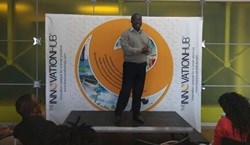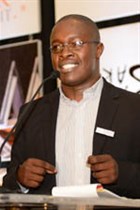Mathematics' contribution to the country's innovation process has been overrated as it is only a part of the process...
South Africa's cry for improvement in maths and science performance has been unprecedented as a result of learners' poor performance as reflected in various international ranking systems. With maths and science proficiency being used as a proxy for educational quality, this has led to members of the public distrusting the government's ability to deliver worthwhile education to their children. Is maths and science proficiency South Africa's answer to its complex socio-economic problems that range from unemployment to innovation and complex problem solving?
Speaking at the inaugural DST Innovation Bridge, Minister of Science and Technology Naledi Pandor said, "Knowledge is the currency of the global economy. If South Africa wants to continue to compete in the 21st century, we must support research and innovation that will generate growth and jobs, now and in the future." Mathematics education has always been seen as the key driver of innovative problem solving for the country.
Maths education in South Africa is packaged wrongly and does not serve the country much good as it is not contextualised for optimal utility value and meaning for both learners and society. The country needs to position maths education so that it capacitates learners with skills for creative problem solving and innovation in all sectors of the economy. The country's issues are complex and require experts who can navigate through the fuzziness to effectively cure society of its ills through creative and unbounded problem solving.
The generalised model of a typical maths lesson in South Africa is that a question/problem is provided and learners have to solve the problem using learnt principles and formulae. This model is firmly rooted in the rationalistic tradition that emanated from the mechanised industrial age problem solving methodologies. The proliferation of the model is a direct result of the false supremacy placed on sciences over arts since the Renaissance Age. This linear mechanistic structure robs learners the chance to sharpen their exploration and problem identification skills which are integral to innovation and problem solving as it focuses on sequential application of methods to given problems which is not a simulation of real life. In life one has to first identify the real problem through critical reasoning, exploration and research.
The so-called "peripheral subjects"
If recalibrating the maths curriculum is an onerous job then it is worthwhile to consider increasing the emphasis on the so-called "peripheral subjects" like art and design. These subjects complement maths as they offer learners the opportunity for divergent thinking, questioning and problem formulation from one's unique perspective which is useful in society. Policy makers in the education space can align maths and design to be complementary subjects that produce an all-round individual who has the freedom to express creativity in problem solving whilst being process disciplined and solution oriented.
Maths alone will produce convergent linear thinkers who are slaves to process, abstract rules and methods which are not necessarily great alone for innovation and creative problem solving. Design offers freedom to roam, wonder, critically question, and understand the status quo of situations and perceived problems. Design skills coupled with mathematical modelling of phenomena will definitely produce learners who can contribute positively to the country's problems.
For the amalgamation of design and maths to be successful, it is paramount that industry specialists, academics and policy makers be united and have definiteness of purpose in unifying the seemingly different fields for the benefit of the country to solve its own problems.
As part of a 2014 book cover design programme that I ran in conjunction with the Department of Science and Technology's, Technology Innovation Agency (TIA), it was evidently sad that most poor rural and township schools did not offer art and design owing to the purported prohibitive operating costs. This is robbing the majority of learners the opportunity to develop critical reasoning, problem solving and solution formulation skills which are critical in all sectors of the economy and society.














































